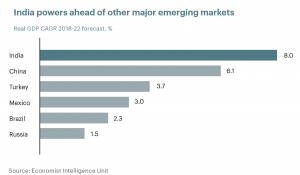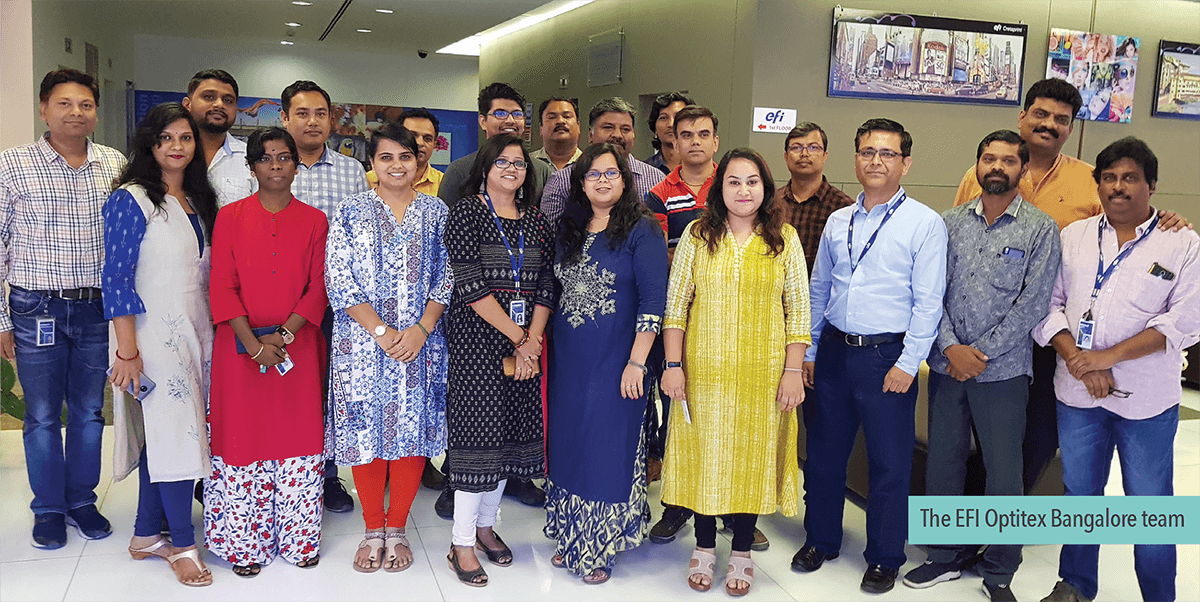India is in Style

When we think of the fashion capitals of the world, the cities that come to mind are New York, London, Milan, and Paris. But will we soon find Delhi or Mumbai on this list? In its recent “The state of fashion 2019” report, global consulting firm McKinsey named India’s fashion industry one of the 10 trends to watch in 2019, noting that the country’s advancements in manufacturing and tech, combined with its growing middle class, turn it into “an essential destination for fashion companies.“
Here at Optitex, we’ve been investing on India’s fascinating fashion arena for quite some time and are happy to share some of its most unique and important characters.
DESIGNING FOR 1.3 BILLION SHOPPERS
 In the past few years, we’re witnessing a dramatic rise in India’s retail sales, online and offline. The country’s fashion segment alone is expected to cross the $75 billion mark by the end of 2022, and the country, which according to the OECD will experience a 7.3% GDP growth, is on its way to become the world’s third-largest consumer market by 2025.
In the past few years, we’re witnessing a dramatic rise in India’s retail sales, online and offline. The country’s fashion segment alone is expected to cross the $75 billion mark by the end of 2022, and the country, which according to the OECD will experience a 7.3% GDP growth, is on its way to become the world’s third-largest consumer market by 2025.
Some fashion sectors are particularly important in India. The local denim industry, for example, is the global leader in terms of manufacturing, with annual capacity of approximately 1,800 million meters.
 This data puts India in the fashion spotlight, and invites designers, manufacturers and retailers worldwide to do a couple of things: first, take this market into account when planning their products and business strategy, while keeping in mind what makes India special and different; and second, work with local representatives and help the industry grow from within.
This data puts India in the fashion spotlight, and invites designers, manufacturers and retailers worldwide to do a couple of things: first, take this market into account when planning their products and business strategy, while keeping in mind what makes India special and different; and second, work with local representatives and help the industry grow from within.
One group that deserves our attention the most is India’s growing middle class. By 2022, it is expected to increase by 1.4% a year, surpassing other Asian markets, including China. This group is growing not just in numbers, but also in its appetite for fashion and fascination with global trends and behaviors. This massive untapped potential is waiting for smart retailers to embrace it.
THE UNIQUE FLAVORS OF INDIA
After we’ve established the fact that investing resources and efforts in the Indian market is crucial, there are a few interesting differences between this and other global markets worth considering:
Embracing tradition: While the middle class is interested in following and even embracing global trends, India’s garment industry still remains somewhat focused on traditional clothing, especially for women. This is particularly true when examining the preferences of older generations, but we all know that fashion trends have a way of repeating themselves over the years.
 This does not mean that there isn’t any room for new brands, ideas and technologies, and we’ve seen many Western brands make a successful entry to this and other Asian markets. It would be wise, however, for retailers to incorporate some traditional elements within their products. This will also send a message to the local market that it is of importance to certain designers and is not just a byproduct of the US and European markets.
This does not mean that there isn’t any room for new brands, ideas and technologies, and we’ve seen many Western brands make a successful entry to this and other Asian markets. It would be wise, however, for retailers to incorporate some traditional elements within their products. This will also send a message to the local market that it is of importance to certain designers and is not just a byproduct of the US and European markets.
The transformation India is currently going through has to do with more than just style choices. The local industry is making the shift from traditional textile design and manufacturing methods to modern and digital technologies. These include virtual prototyping, digital printing, and other solutions that increase businesses’ productivity and profit.
 It’s raining men: When we think of fashion, we tend to focus on women’s clothing. One major difference for retailers to keep in mind is that the men’s market share in India is still much higher than that of women and men expect fashion retailers to offer them a wide selection of garments. Since this balance keeps changing, however, retailers must move faster and be more flexible to answer the needs of different audiences.
It’s raining men: When we think of fashion, we tend to focus on women’s clothing. One major difference for retailers to keep in mind is that the men’s market share in India is still much higher than that of women and men expect fashion retailers to offer them a wide selection of garments. Since this balance keeps changing, however, retailers must move faster and be more flexible to answer the needs of different audiences.
Dealing with diversity: It’s almost funny to discuss the Indian market as if it were one unit, because India is comprised of many different regions, each presenting its own trends and needs. The climate is also different from one area to the next, meaning that fashion seasons must adjust accordingly. Retailers should carefully strategize their first steps in the country, choose the right regions to focus on, study each one separately, and set the right expectations.
Since many of these characteristics demand an enhanced level of flexibility, designers and retailers should use the tools and technologies that allow them to test new concepts, more than ever. Using technologies enables manufacturers and retailers to move from one idea to the next quickly and seamlessly. Automated design-to-production solutions, such as the 2D/3D pattern design, automatic Marker Making solutions and the Print & Cut solution offered by Optitex, turn ideas to garments in no-time and make the industry move much faster, when and where it need it the most.
The Optitex office in India employs 36 people and includes R&D, Sales, Support, Operation and HR team members who hold a deep understanding of the local industry. Company employees are based in Bangalore, New Delhi and Tirupur. Optitex also have a team based in Sri Lanka.




Optitex also partners with local organizations, and formed a unique collaboration with India’s National Institute of Fashion Technology (NIFT) to help students improve their 2D and 3D skills through the company’s technology solutions. Prof. Kripal Mathur, Chairperson of NIFT’s Knitwear Design Department, described this collaboration as “a real breakthrough” and said that the solutions offered by Optitex are “the most advanced, very practical and easy to learn.”
Penetrating new markets is always a challenging task, and the case of India’s fashion industry is no different. Retailers and brands who choose to take on this challenge should find the delicate balance between the tradition side of India and its interest in Western culture.
By working with Optitex, a global company that gained experience in both Asian and Western markets, and by embracing the tools and techniques that will rise above the local obstacles, manufacturers, retailers and brands will have a better chance at winning this challenge and reaching a reward that is well worth it.

 English
English  French
French  Italian
Italian  Spanish
Spanish 